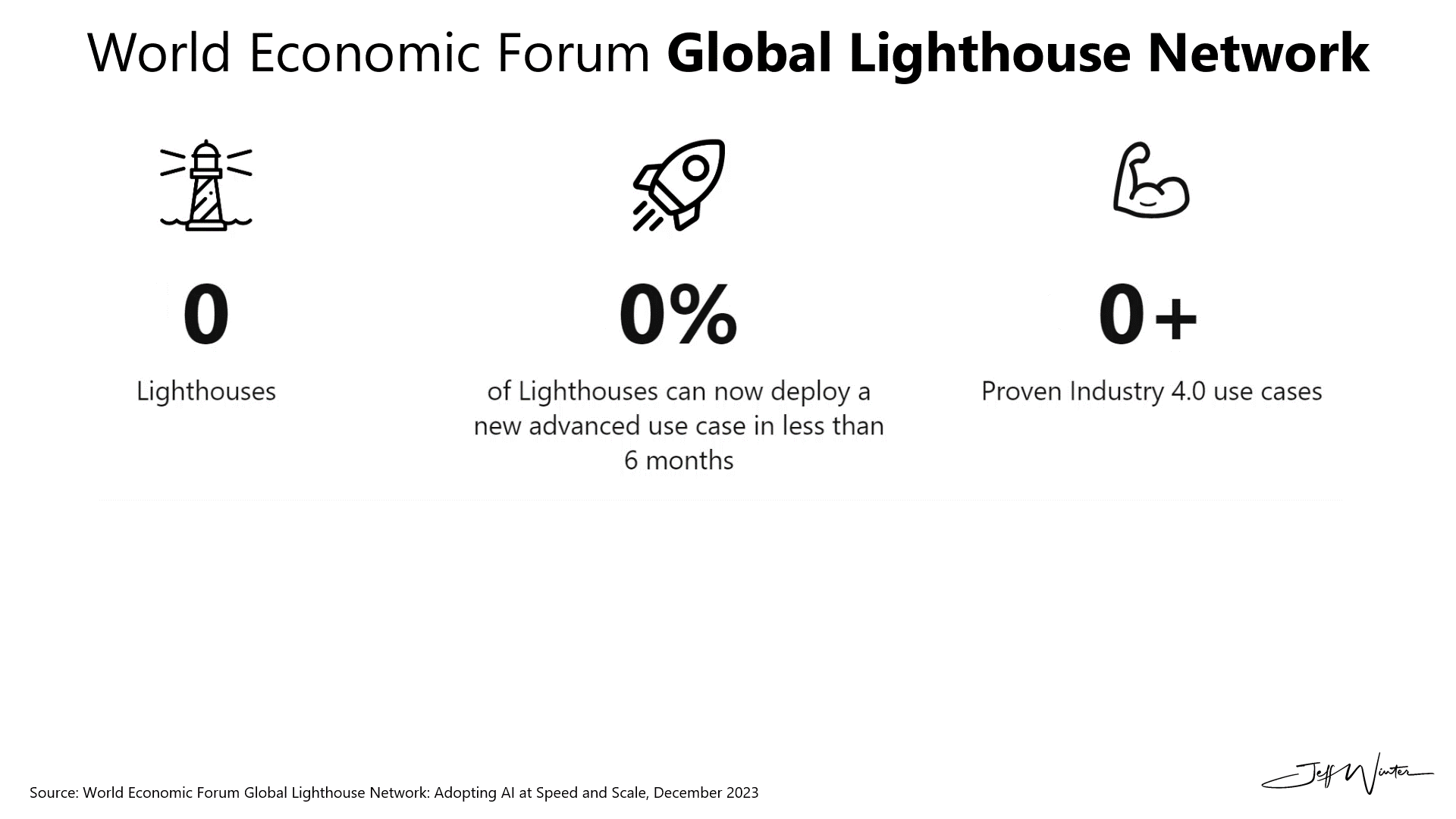World Economic Forum - 153 Global Lighthouses
The World Economic Forum just announced 21 new members have joined this elite group called the Global Lighthouse Network, now totaling 153 members.
What is a Lighthouse Factory?
Just like a lighthouse guides ships, these factories guide the manufacturing industry. They're the front-runners using cutting-edge technologies like AI to lead the way. They show other factories how to be more efficient, eco-friendly, and smarter. Just like a real lighthouse guides ships, these factories are guiding the entire manufacturing industry toward a brighter future.
Main Insights from the Latest Update
Tech-Powered Resilience: During the height of the COVID-19 pandemic, these high-tech factories saw less than 10% revenue loss. That's huge compared to the 14% loss faced by other manufacturers!
AI at the Forefront: Each Lighthouse member has at least one, if not dozens, of powerful AI applications driving massive improvements.
Sustainability Superstars: Four factories earned the title of Sustainability Lighthouses, smashing their environmental goals. For example, one factory reduced material waste by 47%, slashed GHG emissions by 26%, and cut energy consumption by 23%.
Leading the Charge in Innovation: These Lighthouses aren't just about fast production; they're also reducing defects, boosting productivity, and even creating new business models.
Digital Maturity and Machine Intelligence: These factories are all about digital sophistication and leveraging machine intelligence.
Scaling Up: A whopping 82% of these Lighthouses cite "scale" as a key factor. They're not just experimenting – they're transforming at a massive scale!
Suggestions for Manufacturers on How to Take Advantage:
Start with a Solid Strategy for Scaling: If you want to get serious about Industry 4.0, don't just dabble in pilots at a single site. Instead, think big! Design your strategy to scale across your entire network of factories from day one. By treating entire factories as pilots, you can achieve a transformation that's ten times more impactful than single-site projects.
Invest in Your People: The technology is only as good as the people who run it. Develop a robust talent strategy that focuses on upskilling your current workforce with digital and AI skills. Offering reskilling programs and rewarding performance can help build a team that’s ready to drive your digital transformation.
Embrace 'Assetization': Want to speed things up? Package your successful AI and digital solutions into toolkits that can be deployed across different sites quickly and easily. This not only saves time but also ensures consistency in implementation across your entire network.
Leverage AI for Big Decisions: Start thinking about how you can use AI not just for small tasks but for making big, system-level decisions. Setting up AI command centers that manage and optimize entire production systems can make your operations faster, more efficient, and more resilient.
Get Ready for Generative AI: Generative AI is the next big thing, and it’s coming fast. Start exploring how you can integrate it into your operations, whether it's for improving product designs, supporting your technicians, or speeding up your digital transformation. The earlier you get in, the bigger your advantage will be.
References:
World Economic Forum - Global Lighthouse Network - Adopting AI at Speed and Scale, 2023: https://www.weforum.org/publications/manufacturing-lighthouses-and-the-path-to-impact-adopting-ai-at-speed-and-scale/

